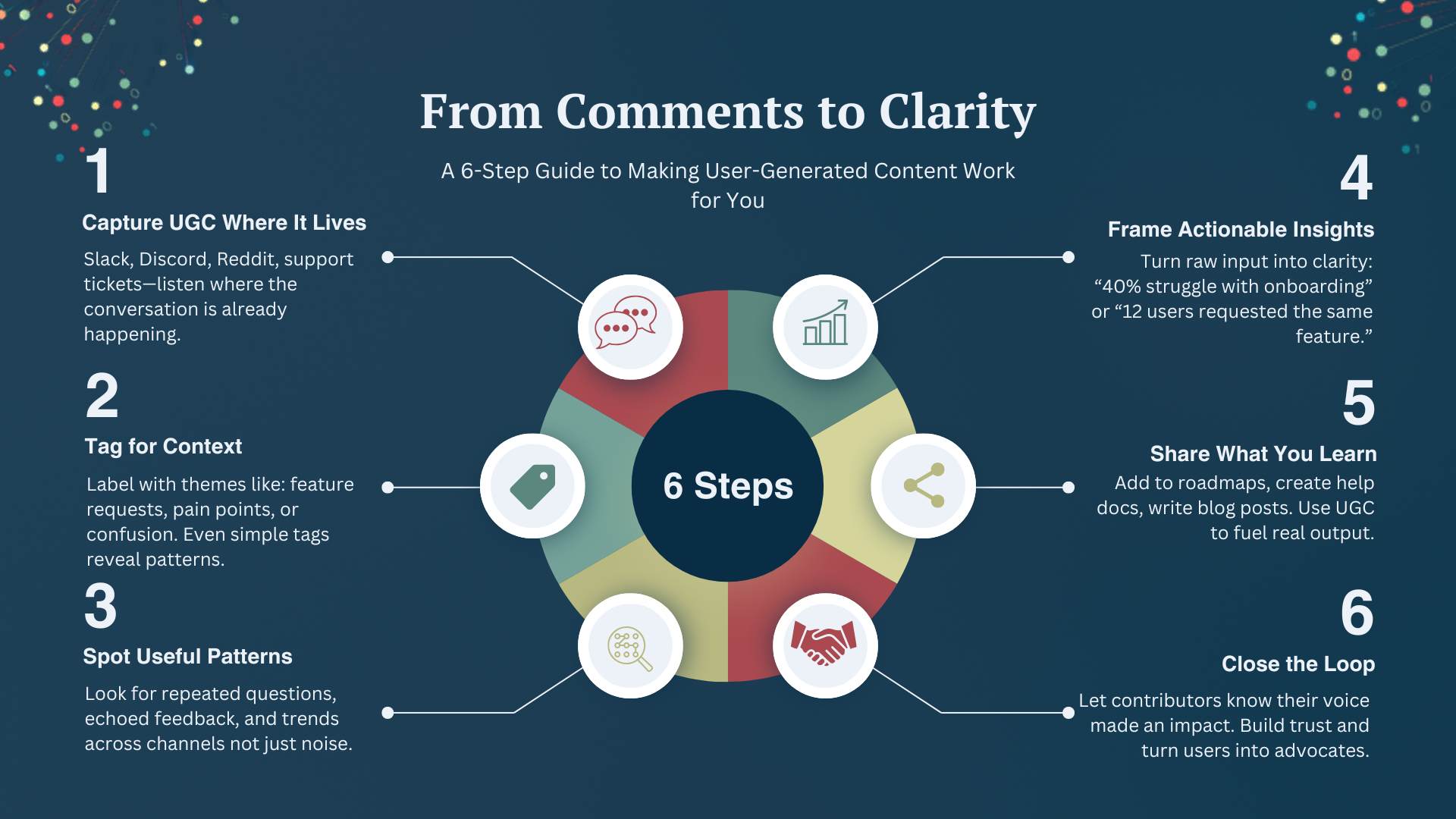How to Turn UGC into Actionable Insights

User-generated content (UGC) is everywhere. It is buried in Slack messages, hidden in support tickets, sprinkled across Reddit threads, and scattered through community forums. While the volume of UGC has exploded, the ability to translate it into clear, meaningful action has not kept pace.
Let’s walk through how to treat UGC not just as noise to manage, but as a goldmine of insights waiting to be surfaced, structured, and acted on through the lens of Content Collection.
1. Capture UGC Where It Lives
UGC doesn’t arrive neatly packaged. It is hidden in:
- Slack threads
- Discord chats
- Email replies
- Reddit and Quora comments
- Internal community groups
Instead of waiting for it to be submitted through a form or survey, create passive intake systems that pull content directly from these channels. Tools that enable ambient collection allow your team to gather without interrupting the flow of conversation.
2. Centralize and Tag for Context
Once captured, context is everything. Who said it? What triggered the comment? Was it praise, confusion, or a request?
Use lightweight tagging systems to mark themes:
- Feature request
- Pain point
- Positive feedback
- Confusion
- Workflow insight
Even basic sentiment and topic tagging can help you pattern what matters most.
3. Distill Signals from Noise
Not all UGC is useful, but some of it is golden. What you need is signal detection:
- Are multiple people asking the same question?
- Is one user’s suggestion echoed by others?
- Are there patterns across channels?
Rather than treating volume as a signal, look for repetition, resonance, and relevance.
4. Turn Observations into Insights
Raw input needs framing. UGC becomes insight when you can write:
- "X% of users mention confusion about Y."
- "We’ve received 14 variations of the same request."
- "Community members consistently describe Z as their favorite feature."
Insights connect the dots and turn anecdotes into direction.
5. Share Findings in the Right Format
Once insights are clear, format matters:
- For product: Add to a feature backlog with real-user quotes.
- For content: Turn questions into blog posts or help docs.
- For community: Create templated answers or tutorials based on FAQs.
Your audience is already writing your roadmap, your FAQ, and your next newsletter. You just need to surface it.
6. Close the Loop
Don’t let UGC disappear into the void. Let contributors know they have been heard. When someone’s feedback leads to a change, share that win publicly.
It builds trust and turns passive participants into invested advocates.
Why Content Collection Changes the Game
Traditional knowledge management assumes someone will clean up and organize the mess. Content Collection flips that. It is about listening first, curating fast, and delivering clarity without rewriting every word.
When UGC is captured as it happens and linked to outcomes, it becomes the most organic form of product validation and content discovery.
Your users are already giving you insights. You just need a system to collect, structure, and apply them. When you turn UGC into a Content Collection practice, you are not just managing content. You are unlocking a continuous loop of feedback and innovation.